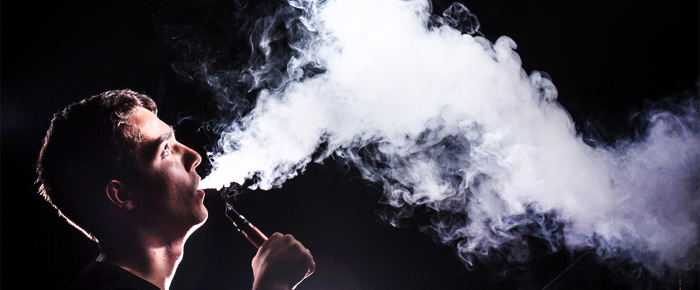
By Haddon Libby
Back in 1939 in the movie “Gone with the Wind,” Scarlett O’Hara told Rhett Butler that she was “overcome by the vapors”. Once upon a time, the vapors were a catch-all phrase used to reflect any number of health issues that might affect women. The vapors might be something as simple as a gassy stomach or as complex as a serious mental condition.
In the modern world, the vapers (replace the ‘o’ with an ‘e’) have taken a whole new meaning.
In 2004, a Chinese medical researcher named Hon Lik lost his father to lung cancer. This caused him to want to quit smoking so he began using nicotine patches. One night, he forgot to remove the patch and had a fitful sleep where he dreamt that he was drowning in the ocean and with his lungs filling with water. Just as he was about to drown, the water transformed into a harmless vapor that he could easily breathe. With this, Lik found his inspiration and created the e-cigarette which used a battery in a plastic cartridge and a nicotine solution suspended in propylene glycol that was vaporized for inhalation with an atomizer.
Interestingly, Lik was not the first to have this vision. A patent was filed in 1962 by Herbert A. Gilbert showing the design of an e-cigarette that looks similar to Hon Lik’s invention. Gilbert states that his invention never found traction in the United States as the tobacco companies wanted to wait for his patent rights to expire before exploiting his invention. It is more likely that the tobacco companies did not want to upset their very lucrative business model.
The term vaping was first used in 1980 when J. Phillip Ray created a smokeless cigarette which was simply paper soaked in nicotine. This idea and other similar patents were bought by the tobacco companies in order to suppress these new ideas in order to preserve their business models.
Is Vaping Safe?
Studies have proven that vaping is 95% safer than a traditional cigarette. This is because a vaping pen or e-cigarette does not leave tar in your lungs or contain the numerous toxins contained in tobacco cigarettes.
The main ingredient used in vaping is propylene glycol which is a key ingredient used in asthma inhalers. As such, you would assume that vaping is safe, right?
The American Lung Association expressed concerns that vaping may have serious health consequences as the vaping industry lacks regulation thus allowing the industry to potentially put anything that it wants in the liquids that vapers inhale. As an example, nicotine can be used in any strength that a merchant wants without restriction. Numerous studies have found that nicotine is as addictive as heroin or cocaine. Other studies conclude that long-term or excessive intake of nicotine can lead to cardiac problems while harming brain development. Another serious concern is that nicotine may be a ‘tumor promoter’. While the nicotine itself may not be carcinogenic, early studies in animals are finding that it may play a role in promoting one’s susceptibility to cancers of the colon, pancreas, esophagus and mouth. There are additional concerns that lungs may scar from vaping which could cause health problems later in life.
Due to all of these concerns, the FDA recently released new regulations on the industry that will prohibit sales to minors while requiring a Premarket Tobacco Application on every vaping product in a process that is similar to that experienced by the beer industry.
While the verdict may still be out on the safety of vaping, it is clear that vaping is a healthier choice than tobacco smoking.
Haddon Libby is an Investment Advisor and Managing Director at Winslow Drake and can be reached at HLibby@WinslowDrake.com or 760.449.6349.












































